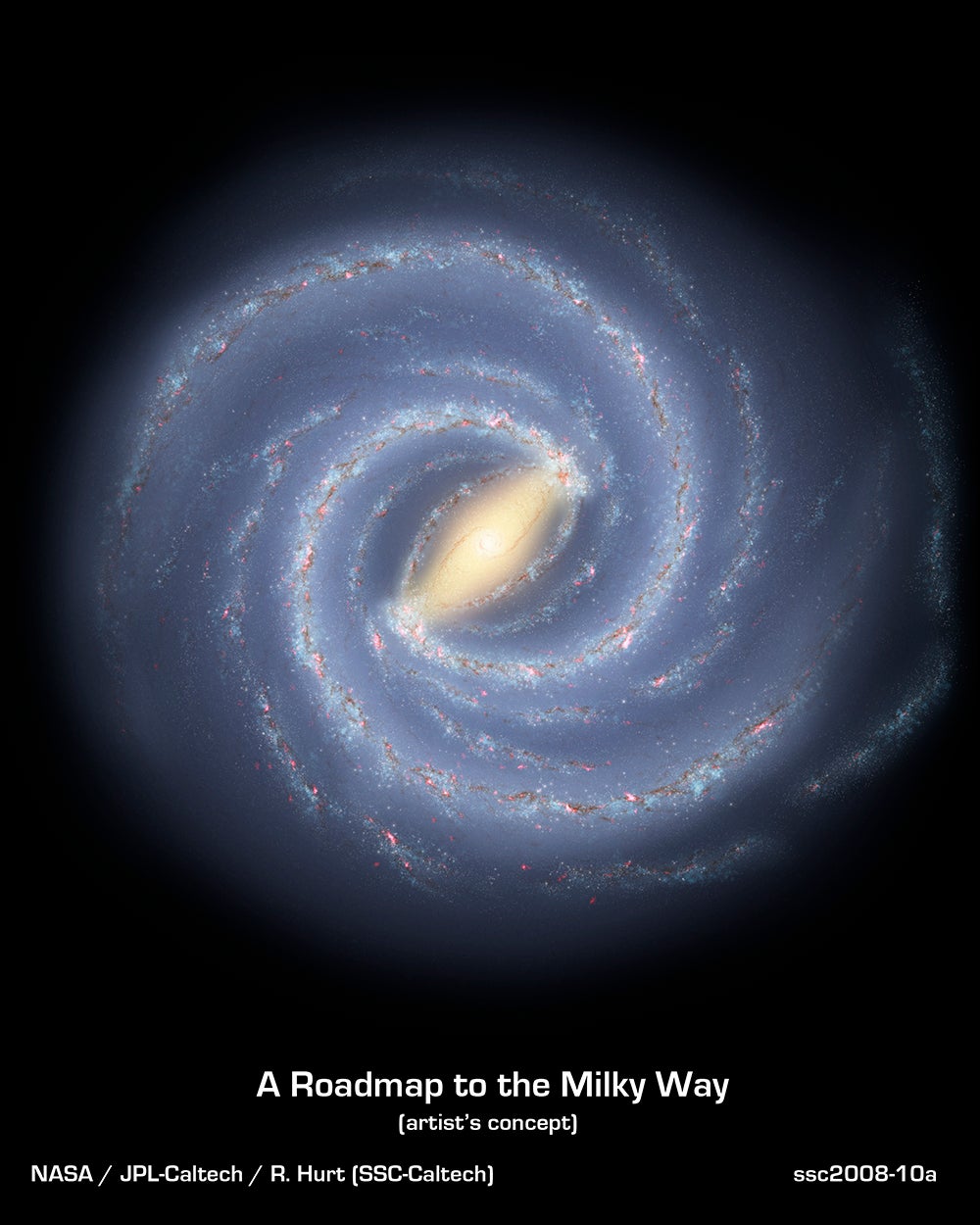Around 10 million years ago, a small galaxy collided with our Milky Way, creating a cosmic sausage. That so-called “Gaia-Enceladus-sausage” (GES) merger event stirred up the stars in our galaxy, flinging some of them into sausage-like elongated orbits around the galaxy’s central black hole and puffing up the Milky Way’s disk to its current thick, pancake-like shape.
Now, astronomers think that the GES merger might also be responsible for molding the Milky Way’s characteristic bar—a straight line of stars at the center of the galaxy’s spiral. Their findings were recently submitted to the journal Monthly Notices of the Royal Astronomical Society and are currently available on arXiv as a pre-print.

“Our paper shows, for the first time, that the Milky Way’s bar could have been created as a direct result of the Galaxy’s biggest merger [the Gaia-Enceladus-Sausage merger], whose remnants we can see in the motions of nearby stars,” authors Alex Merrow and Robert Grand, astronomers at Liverpool John Moores University tell PopSci.
Nearly two-thirds of all spiral galaxies have bars, and they’re a crucial piece of the puzzle of how stars, gas, and energy move throughout a galaxy because of their gravitational influence. However, astronomers don’t fully understand how they came to be. Although we can’t travel back in time to see the Milky Way’s origins, astronomers can study nearby stars of different ages in great detail, providing clues about the past. “Observational clues lie in starlight, much like fossils inform us about the Earth’s history,” Merrow and Grand explain. “In particular, the positions, motions, and chemical compositions of stars throughout the galaxy tell stories of our Cosmic past.”
Recent observations hinted that our galaxy’s bar might be quite old—perhaps 10 million years old, around the same time as the GES merger. To see if the merger could nudge stars in just the right way to form a bar, the researchers generated a computer simulation of a GES-like galaxy smashing into a Milky-Way-like galaxy, and then watched how the stars moved with “gravity” over time. With this setup, the stars in the simulation formed into a bar pretty quickly, indicating that it’s possible this type of merger event could make a galactic bar.
“It’s a cool result, especially since there’s a lot of evidence nowadays showing how the GES merger had a significant impact on a number of the Milky Way’s present-day properties,” Pratik Gandhi, a UC Davis astronomer not involved in the new work, tells PopSci.
Our galaxy is also an important player in how we got here—living creatures on the tiny rock that is Earth. “In the Milky Way, we live well outside of the bar region, but we’re not outside its influence,” Merrow and Grand explain. When the bar was moving around stars, it may have shifted our sun, too—and where you live in a galaxy has huge consequences for how comfortable a planet you live on. The sun could have “been born in a completely different part of the galaxy to where it is now, owing to the bar’s gravitational influence moving it around,” they add.
Learning more about our home galaxy is important for our own origin story, explaining why we ended up in this particular part of the galactic neighborhood. This information could be key to unlocking other galactic histories as well. As Merrow and Grand say, this work will “provide a new perspective on the history of other barred galaxies throughout the Universe.”





